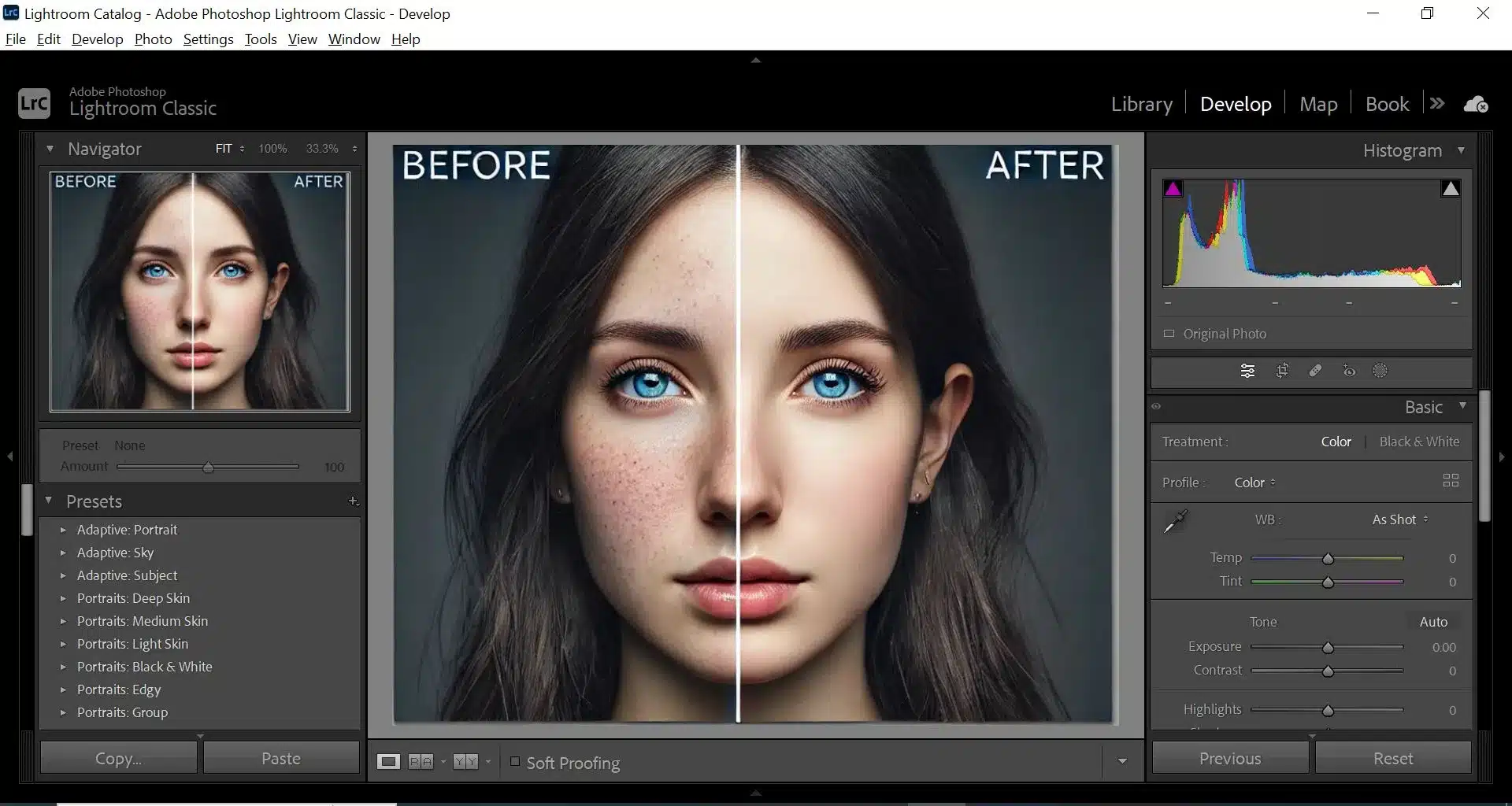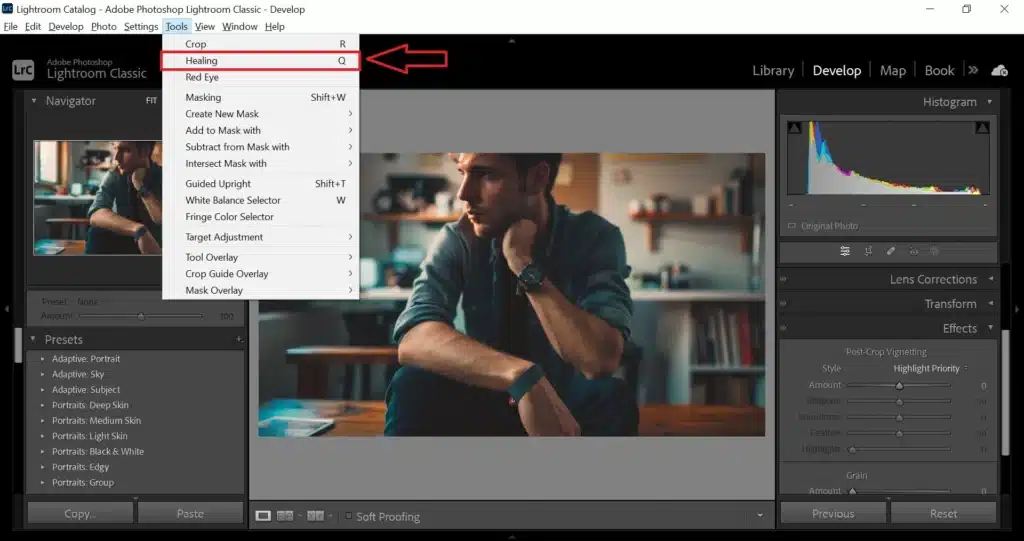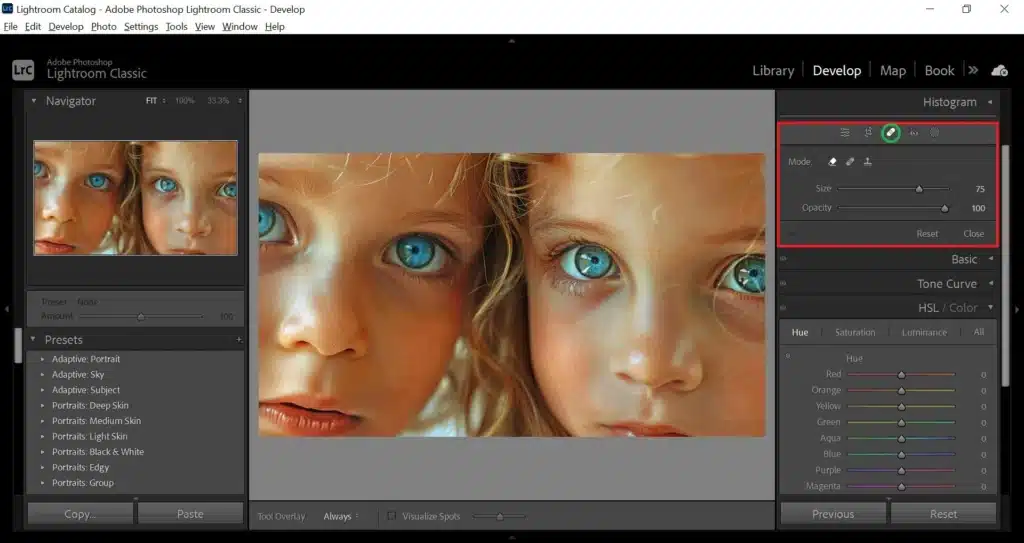
Introduction to How to Use Healing Brush in Lightroom
Adobe Lightroom is a powerful photo editing tool that offers a wide range of features to enhance and perfect images. One of the most essential tools in Photoshop is the Healing Brush. Knowing how to use Healing Brush in Lightroom is crucial for anyone looking to remove blemishes, spots, or unwanted elements from photographs seamlessly. This tool simplifies the process of retouching photos, ensuring that the final photograph looks natural and flawless.
It works by allowing users to paint over imperfections, which are then replaced by pixels from surrounding areas, effectively blending them in. This is particularly useful for portrait photographers who need to touch up skin, as well as landscape photographers who want to remove distractions from their shots.
Table of Contents
Step-by-Step Guide: How to Use Healing Brush in Lightroom

By mastering how to use healing brush in Lightroom, you can ensure your images look natural and professionally retouched. Following are the steps to guide you about it:
Selecting the Healing Brush Tool
- Develop Module: To begin, open Lightroom and navigate to the Develop module. The Healing Brush tool can be found in the tool strip on the right side of the screen. Click on the Band-Aid icon to activate the tool.
- Choose Right Option: Once activated, choose between the Heal and Clone options. The Heal option is best for blending imperfections with the surrounding pixels, while the Clone option copies the exact pixels from one area to another. Adjust the brush size, feather, and opacity to suit the specific retouching needs.
Using the Healing Brush on Skin Imperfections
- Paint: Select the Lightroom Healing Brush and paint over skin imperfections such as blemishes, scars, or wrinkles. Lightroom will automatically sample nearby pixels to blend the area seamlessly.
- Precise refining: Zoom into the photo and carefully adjust the brush size to match the imperfection. Use the feather slider to soften the edges of the brush for a more natural look. This technique is especially useful in bird photography where fine details are crucial.
Removing Unwanted Objects
- Skin Retouching: The Healing Brush tool is not only for skin retouching but also for removing unwanted objects from your photos. Click on the object you wish to remove and drag the brush over it. It will blend the area with the surrounding pixels to make the object disappear.
- For larger objects: Make multiple small brush strokes instead of one large stroke. This allows for better control and a more natural-looking result. This method can be particularly effective in wildlife photography, where distracting elements can often appear in the background.
Adjusting Sampled Areas Manually and Save
- Manual Selection: If Lightroom does not automatically select the best sample area, you can manually adjust it. Click on the handle of the sampled area and drag it to a new location that better matches the target area. For more control, use the Visualize Spots feature by checking the box below the image. This inverts the image, making it easier to see imperfections and dust spots that need to be retouched.
- Final Touches and Saving: After retouching, review the entire photograph to ensure all imperfections have been addressed. Use the reset button if you need to start over with any adjustments. Finally, export the edited photo by navigating to the File menu and selecting Export. Choose the desired file format and quality settings, and save the image to your computer.
How to Use Healing Brush in Lightroom for Landscape Photography
Selecting the Right Areas to Heal
When using this for landscape photography, it’s essential to choose the right areas to correct. Look for distractions like dust spots, litter, or unwanted objects that detract from the scene. It is perfect for these small corrections, allowing you to maintain the natural look of your landscape photos.
Adjusting the Brush Settings
Adjusting the settings in Lightroom is crucial for achieving the best results. Customize the brush size to match the imperfection you want to remove. Use the Feather slider to blend the edges seamlessly with the surrounding area. This step is vital to ensure the corrections do not stand out and look artificial.
Using the Lightroom Healing Tool Effectively
To use the Lightroom healing tool effectively, click and drag over the area you want to correct. The tool will automatically sample pixels from the surrounding area and blend them to cover the imperfection. This technique is particularly useful for fixing small issues like sensor spots or minor blemishes in the landscape.
Final Touches and Adjustments
After applying this, zoom in to inspect the corrected areas closely. Make sure the corrections blend naturally with the rest of the image. If needed, adjust the opacity or reapply it for a better match. This careful inspection ensures a flawless final image.
Combining Techniques for Best Results
For the best results, combine the healing brush with other post-processing tools in Lightroom. For example, adjusting the aspect ratio of your photograph can help in cropping out unwanted elements. Additionally, use tools to enhance the overall appearance of the landscape, making sure every detail contributes to a stunning photograph.
Here is a list of some other important features of Lightroom that can help you edit better images:
| Feature | Use | Benefit | Example |
|---|---|---|---|
| Healing Brush | Remove imperfections | Cleaner images | Removing blemishes from portraits |
| Clone Tool | Duplicate areas | Fix large areas | Replacing background elements |
| Adjustment Brush | Selective adjustments | Precise editing | Enhancing exposure in specific areas |
| Graduated Filter | Adjust gradients | Smooth transitions | Balancing skies in landscape photos |
| Spot Healing Brush Tool | Fix spots and small elements | Detailed corrections | Cleaning dust spots from sensors |
| Crop Tool | Adjust framing | Improve composition | Cropping to the ideal aspect ratio |
| Lightroom Healing Tool | Blend and correct issues | Natural look | Fixing minor imperfections |
| Radial Filter | Circular adjustments | Focus on subjects | Creating vignette effects |
How to Use Healing Brush in Lightroom to Enhance Portraits
Learning how to use healing brush in Lightroom can significantly enhance your photo refining skills, allowing for seamless removal of imperfections.
Smoothing Skin Tone
Achieving a smooth skin tone can make a significant difference in portrait images. When the target area is selected then gently apply the adjustments to even out any inconsistencies. This process should be done carefully to maintain a natural look. If you encounter any problems, use the Visualize Spots feature to identify and correct imperfections. For those using the premium version, additional advanced tools are available for more refined adjustments.
Pro Tip: Learning how to smooth skin tone will help in achieving perfect portraits.
Reducing Blemishes
Reducing blemishes is a common need in portrait enhancement. After opening your photograph in Lightroom, ensure the correct settings are applied to target specific areas without over-processing the entire image. You can consider using Adobe Photoshop for additional touch-ups. Always maintain a consistent view of the final image to ensure a natural appearance.
Enhancing Facial Features
Enhancing facial features involves subtle adjustments to highlight the natural beauty of the subject. Use the tools to make minor corrections around the eyes, nose, and mouth. Always zoom out to get a comprehensive view of the overall effect and ensure consistency throughout the portrait. If you have joined any Lightroom communities, share your work and gather feedback from another member.
Correcting Lighting Issues
Lighting can dramatically impact the quality of a portrait. Adjusting exposure and contrast can solve many lighting issues such as in low-light conditions. When working on this, make sure the changes blend seamlessly with the rest of the image. If you encounter a problem that can’t be solved within Lightroom, sometimes switching to a different version of the software or using additional tools may be necessary.
Final Touches
Before finishing, review the entire portrait for any areas that may need slight adjustments. This includes ensuring that all changes are consistent and that no new issues have been introduced. Whether you are using the free version or have access to premium features, mastering these techniques will significantly improve your skills. Don’t forget to check for any messages from the software about updates or additional features that might assist in the process.
Below is the table that has the price and packages of Lightroom:
| Plan | Price/M | Features |
|---|---|---|
| Lightroom (1TB) | $9.99 | Includes 1TB of cloud storage, and access to LR on mobile and desktop. |
| Photography Plan (20GB) | $9.99 | Includes 20GB of cloud storage, and access to Lightroom and Photoshop. |
| Photography Plan (1TB) | $19.99 | Includes 1TB of cloud storage, and access to Lightroom and Photoshop. |
Common Mistakes to Avoid
Mastering how to use Healing Brush in Lightroom can significantly improve your photo editing skills, but several common mistakes can hinder your progress. By avoiding these errors, you can ensure your images look professional and polished.
1. Overusing the Healing Brush Tool
One of the most common mistakes is overusing the tool. While it’s tempting to fix every minor imperfection, doing so can make the photograph look unnatural. It’s essential to maintain the natural texture and features of the photo to avoid an overly edited appearance.
2. Ignoring Brush Settings
Not adjusting these settings properly can lead to poor results. The size, feather, and opacity of the brush should be customized for each area you are working on. For instance, using a large brush for small imperfections can remove more than intended, while a small brush might not cover the area adequately.
3. Inconsistent Sampling Areas
When the tool samples from inconsistent areas, it can introduce color and texture mismatches. Always ensure the source area closely matches the target area to maintain consistency. This is particularly important in portrait photography ideas, where skin tone and texture need to be uniform.
4. Ignoring the Overall Composition
Focusing too much on individual imperfections can make you lose sight of the overall composition. It’s important to periodically zoom out and check the entire photograph to ensure that your edits are cohesive and that you haven’t overlooked other areas that might need attention.
5. Not Using Visualize Spots
The Visualize Spots feature in Lightroom is designed to help identify small imperfections that might not be visible at first glance. Neglecting to use this tool can result in missed spots that could have been easily fixed. It’s particularly useful in different photography types, including landscape and wildlife photography, where minor details can impact the overall quality of the photograph.

Frequently Asked Questions About How to Use Healing Brush in Lightroom
How do you use the healing brush tool?
Open the Develop module and select the Spot Removal feature. Choose the “Heal” option, then click and drag over the area you want to correct. Lightroom will automatically blend the correction using pixels from the surrounding area to create a seamless fix.
Where is healing in Lightroom on desktop?
It is found under the Spot Removal tool in the Develop module. You can access it by clicking on the Band-Aid icon located just below the histogram. Once selected, ensure you choose the “Heal” mode to begin making corrections.
How do I use brushes in Lightroom app?
Selective adjustments can be made by tapping the “Selective” icon at the bottom of the screen. Choose the brush icon to set your preferences and paint over the areas requiring changes. Customize the size, feather, and flow of the brush for detailed control over your adjustments.
How do I heal skin in Lightroom?
Select the Spot Removal option from the Develop module and choose the “Heal” setting. Click and drag over the blemishes or uneven areas on the skin, allowing Lightroom to use nearby pixels for blending and correction. Adjust the settings as needed to maintain a natural appearance.
Final Thoughts on How to Use Healing Brush in Lightroom
In my experience, using the various features of Adobe Lightroom has significantly enhanced the quality of my portraits. I remember a time when I struggled with maintaining a natural look in my images. By learning to expand my skills and using the right settings, I could finally achieve the professional results I desired. The classic approach of taking time to carefully adjust each element and upvote the importance of subtlety has been key to my success.
As a user of Lightroom, I have found that being able to make quick adjustments and review the content of my work has allowed me to create stunning portraits. Don’t just take my word for it; if you want to downvote frustration and upvote your skills, I highly recommend checking out our Photoshop course and Lightroom course. These courses are designed to help you master the tools and techniques needed to take your work to the next level. Join us today and see the difference for yourself!
Have a nice photoshoot!
Learn more about Photo Editing with Lightroom and Photoshop:
















